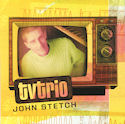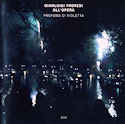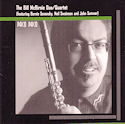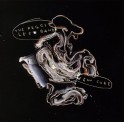TV Trio
John Stetch
Brux Records BRUX 14112
(www.johnstetch.com)
John Stetch was born in Edmonton, Alberta and was exposed to the sounds of jazz at an early age through his father's record collection. He began as a reed player before switching to piano, earned his Bachelor of Music degree in Montreal and built a reputation touring across Canada before re-locating to New York in 1993.
For this CD John has chosen a dozen themes from TV shows and transformed them into jazz performances. I have to make a confession. I was only familiar with six of them, (a prize if you can guess which six), but that certainly didn’t prevent me from enjoying the music.
John is extremely imaginative in his concepts of the various themes and has technique in abundance with which to express his ideas. Of the dozen titles only “The Flintstones”, which John chose to put into the minor, giving it a somewhat dark character, has been frequently played by jazz musicians although on listening to this album it seems to me that, for example, “The Waltons” and “Bugs Bunny” and “The Mighty Hercules” could well be adopted by others.
With the exception of “All My Children”, which is a brief but beautiful solo piano performance, Stetch is ably supported by Doug Weiss on bass and Rodney Green on drums.
Jim Galloway
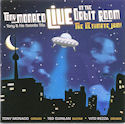 Live at the Orbit Room - The Ultimate Jam
Live at the Orbit Room - The Ultimate Jam
Tony Monaco & his Toronto Trio
Chicken Coop CCP 7012
(www.b3monaco.com)
According to any dependable jazz cookbook, the recipe for a tasty live recording requires an appetizing artist, a hungry audience and a venue that allows for passion to sizzle. Established in 1994, the unpretentiously hip Orbit Room in Toronto’s Little Italy is a happening hang frequented by avid music lovers and musicians alike. The upper level performance space is armed with a B3 organ and offers nightly live acts including roots, R&B, rock and reggae, as well as jazz.
On June 22nd of 2007, critically acclaimed Columbus, Ohio native jazz organist Tony Monaco played the Orbit Room as part of the TD Canada Trust Toronto Jazz Festival, joined by two of our city’s extraordinary resident jazz musicians: guitarist Ted Quinlan and drummer Vito Rezza. Supported generously by both Torontonians on this particular night, Monaco’s playing is rich with meaty musical chops and incontestable enthusiasm. The sidemen consistently listen, react and enhance the musical experience. Quinlan is quintessentially on top of his game, delivering spirited solos that tell exciting stories and Rezza is not only supportive, but soulful. On every track, especially ’Sbout Time and Slow Down Sagg, the trio grooves contagiously and the audience eats it up. From appetizer to dessert, “The Ultimate Jam” follows the live recording recipe flawlessly. Let it be a model for capturing some of the delectable jazz entertainment served regularly in Ontario’s capital.
Ori Dagan
Gianluigi Trovesi
ECM 2068
Emphasizing the streak of romanticism which characterizes nearly every Italian instrumentalist – no matter how avant-garde – multi-woodwind player Gianluigi Trovesi interprets a series of familiar operatic airs. Backed by the wind and percussion Filarmonica Mousiké, the veteran improviser fashions an original take on 17th, 18th and 19th Century themes by Monteverdi, Cazzati, Pergolesi, Verdi, Puccini, Rossini and Mascagni without jazzing up or burlesquing them.
Making full use of the luscious crescendos and cushioning timbres available from the 54-piece orchestra, the only additions are cellist Marco Remondini and percussionist Stefano Bertoli to enhance the rhythmic impetus. Taking the role of operatic vocalist, Trovesi produces a fantastic series of glissandi, portamento runs and just plain beautiful playing, using at different junctures all his horns – piccolo and alto clarinets plus alto saxophone. Nearly always playing legato, he emphasizes the emotional and melodic undercurrents of these pieces without ignoring their poignant roots.
Mixing world famous and obscure parts of the opera repertoire, these arrangements interweave the popular airs – which the clarinettist has loved since his childhood near Bergamo – with improvisational freedom. Listeners familiar with standards such as Verdi’s E Piquillo un bel gaglardo and Rossini’s Largo al factotum will marvel at how Trovesi’s re-interpretations refresh them. More remarkable is how well Trovesi’s own compositions – such as Salterello amoroso with him spluttering smooth Johnny Hodges-like timbres atop contrapuntal orchestra lines, or Vesponse, a big-band swing piece enlivened with reed split tones and shrills – fit among these traditional tunes without disruption.
Ken Waxman
Bill McBirnie Duo/Quartet
Independent EF04
(www.myspace.com/billmcbirnieextremeflute)
Anyone who has heard him knows that Bill McBirnie is a wonderfully gifted flautist. This CD finds him in the company of three of his favourite players on six of the twelve tracks, the others being duo performances with Bernie Senensky.
It is one of those CDs where I find it difficult to choose favourite numbers. The entire album is a joy to listen to, not only for Bill's beautiful playing, but, as one would expect, the musicality and sensitive contributions from pianist Senensky, Neil Swainson on bass and drummer John Sumner.
As is his wont, Bill has shown a preference for playing standards, ranging from Keith Jarrett's My Song to Bright Mississippi, Thelonious Monk's variation on the changes of Sweet Georgia Brown via the hymn Stand Up, Stand Up For Jesus which becomes something of a march for Jesus! The one exception to familiar material, although fans of the Moe Koffman Quintet might remember it, is the album's title piece, a tour de force called Paco Paco, composed by Bernie Senensky.
I don't know how widely distributed this recording will be, but if you have trouble finding it you could send an e-mail to
billmcb@idirect.com. Say that Jim sent you!
Jim Galloway
The “Other” Peggy Lee
By Ken Waxman
Established in Vancouver for nearly 20 years following extensive musical study in her native Toronto, Peggy Lee has become one of the most in-demand cellists in both improvised and New music. Occasionally working with her husband, drummer Dylan van der Schyff, but more frequently on her own, Lee’s string prestidigitation is prominent in meetings with Canadian, American and European musicians.
Recent discs show the range of her talents. Spiller Alley (RogueArt ROG-0016 www.rougart.com) features her as part of a trio completed by Bay area saxophonist Larry Ochs and New York koto player Miya Masoka. Meanwhile Escondido Dreams (Drip Audio DA00206 www.dripaudio.com), is a trio with other Lower Mainlanders guitarist Tony Wilson and saxophonist Jon Bentley. Wilson, Bentley and van der Schyff are also on the cellist’s New Code (Drip Audio DA 00318 www.dripaudio.com) along with other West Coast luminaries – trumpeter Brad Turner; guitarist Ron Samworth, trombonist Jeremy Berkman and electric bassist André Lachance. On Continuation (Cryptogramophone CG 140 www.cryptogramophone.com), percussionist Alex Cline gathered a similar group of California-based improvisers – violinist Jeff Gauthier, pianist Myra Melford, bassist Scott Walton to play his tunes. Lee is the only non-American.
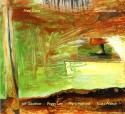 Alex Cline’s writing has an Asian feel to it. Scene-setting gong resonations color nearly every track, with Melford’s winnowing harmonium drone sometimes adding to the Far Eastern emphasis. Eclectic in execution, most of the compositions bounce from near-syrupy melodies usually advanced by the fiddler, to modern swing propelled by thumping bass and the pianist’s dynamic patterning. In between, Lee’s malleable timbres join with Gauthier’s brusque lines for thematic elaboration, or add staccato runs and spiccato jumps to advance the rhythm. On the Bones of the Homegoing Thunder is the most spectacular tune. It manages to wrap an exposition and recapitulation of temple bell peals and mournful cello runs around walking bass lines, kinetic piano runs plus string-clipping and triple-stopping from cello and violin.
Alex Cline’s writing has an Asian feel to it. Scene-setting gong resonations color nearly every track, with Melford’s winnowing harmonium drone sometimes adding to the Far Eastern emphasis. Eclectic in execution, most of the compositions bounce from near-syrupy melodies usually advanced by the fiddler, to modern swing propelled by thumping bass and the pianist’s dynamic patterning. In between, Lee’s malleable timbres join with Gauthier’s brusque lines for thematic elaboration, or add staccato runs and spiccato jumps to advance the rhythm. On the Bones of the Homegoing Thunder is the most spectacular tune. It manages to wrap an exposition and recapitulation of temple bell peals and mournful cello runs around walking bass lines, kinetic piano runs plus string-clipping and triple-stopping from cello and violin.
Lee’s octet CD is less formalized, though no less eclectic, but democratic in its soloing. Both guitarists are partial to folksy twangs as well as Hard Rock-like distortions; the horns produce R&B-like vamps plus processional harmonies; Turner on flugelhorn is the languid melodist; and van der Schyff constantly pumps parts of his kit. Meanwhile the cellist personalizes the material. On Tug her angled sweeps tug apart into spikier runs the horns’ ceremonial grace notes. On Not a Wake Up Call flanged and distorted guitar licks shatter into jagged and ricocheting slurs as Lee’s spiccato multiphonics help gentle the theme so that it runs into the calming Floating Island – complete with muted trumpet – which follows. Dealing with a tune as familiar as Bob Dylan’s All I Really Want To Do, her mordant modal interjections halt a conventional, C&W-styled reading, and encourage agitato horn shrills on top of Byrds-like guitar strumming and a vocalized saxophone obbligato.
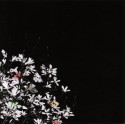 Bentley’s woodwind arsenal has more space on “Escondido Dreams”, proving adept at both speedy and languid tempi. Man and Dog plus Monkey Tree/Just Stories demonstrate this. On the first, the saxophonist defines the Impressionistic theme, along with Lee’s cello obbligato. After descriptive unison passages first with the cellist, then with the guitarist, sax trills dovetail into slurs as Wilson strums mandolin-like chords and Lee sweeps across the sound-field. Tougher and animated, the latter is a roller coaster of a tune built on contrapuntal reed bites and electrified guitar interjections. Following a raucous call-and-response section, the guitarist’s chromatic patterning and Lee’s spiccato runs reintroduce the note-dangling theme.
Bentley’s woodwind arsenal has more space on “Escondido Dreams”, proving adept at both speedy and languid tempi. Man and Dog plus Monkey Tree/Just Stories demonstrate this. On the first, the saxophonist defines the Impressionistic theme, along with Lee’s cello obbligato. After descriptive unison passages first with the cellist, then with the guitarist, sax trills dovetail into slurs as Wilson strums mandolin-like chords and Lee sweeps across the sound-field. Tougher and animated, the latter is a roller coaster of a tune built on contrapuntal reed bites and electrified guitar interjections. Following a raucous call-and-response section, the guitarist’s chromatic patterning and Lee’s spiccato runs reintroduce the note-dangling theme.
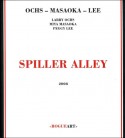 Veteran Ochs uses more advanced techniques than Bentley on “Spiller Alley”, while the multi functions of Masaoka’s many-stringed koto negate the need for drums. Ironically, despite the textures of the venerable Japanese instrument, and unlike “Continuation”, this CD has almost no Asian reflections. Expert in rasgueado and chromatics, Masaoka treats her koto as if it is a combination harp, 12-string and six-string guitar. Bringing out node striations as well the sounds of the notes struck – as does Lee – the string duo attaches and detaches timbres to mutate the program as Ochs enlivens his work with wide octave jumps, staccato blasts and circular breathing. Climaxing the session during the 18 minute title tune, the three criss-cross each other’s lines and runs, off-setting or cushioning when needed. With Ochs peeping and shrilling arpeggios, Masaoka unleashes a torrent of cascading tones and Lee exposes multi-string runs. The cumulative consequence showcases imperfectly formed but not unpleasant, textures from each. Operating in triple counterpoint, blurry interaction comes into focus, with the end result trilled, swept and resonated into a stripped-down mutual rapprochement.
Veteran Ochs uses more advanced techniques than Bentley on “Spiller Alley”, while the multi functions of Masaoka’s many-stringed koto negate the need for drums. Ironically, despite the textures of the venerable Japanese instrument, and unlike “Continuation”, this CD has almost no Asian reflections. Expert in rasgueado and chromatics, Masaoka treats her koto as if it is a combination harp, 12-string and six-string guitar. Bringing out node striations as well the sounds of the notes struck – as does Lee – the string duo attaches and detaches timbres to mutate the program as Ochs enlivens his work with wide octave jumps, staccato blasts and circular breathing. Climaxing the session during the 18 minute title tune, the three criss-cross each other’s lines and runs, off-setting or cushioning when needed. With Ochs peeping and shrilling arpeggios, Masaoka unleashes a torrent of cascading tones and Lee exposes multi-string runs. The cumulative consequence showcases imperfectly formed but not unpleasant, textures from each. Operating in triple counterpoint, blurry interaction comes into focus, with the end result trilled, swept and resonated into a stripped-down mutual rapprochement.
While each musician’s skill melds to produce these notable CDs, each would be unthinkable without Lee’s talents and interactive expertise.


